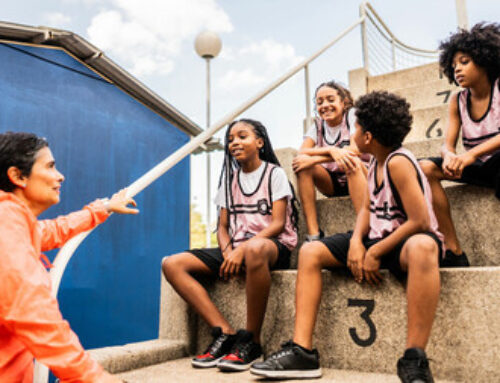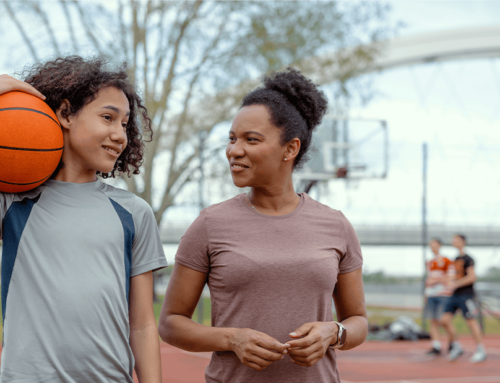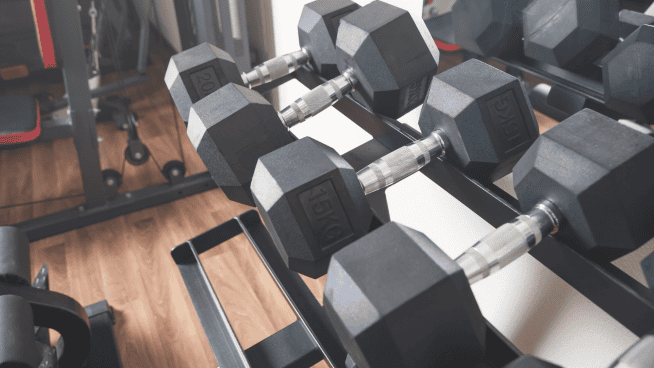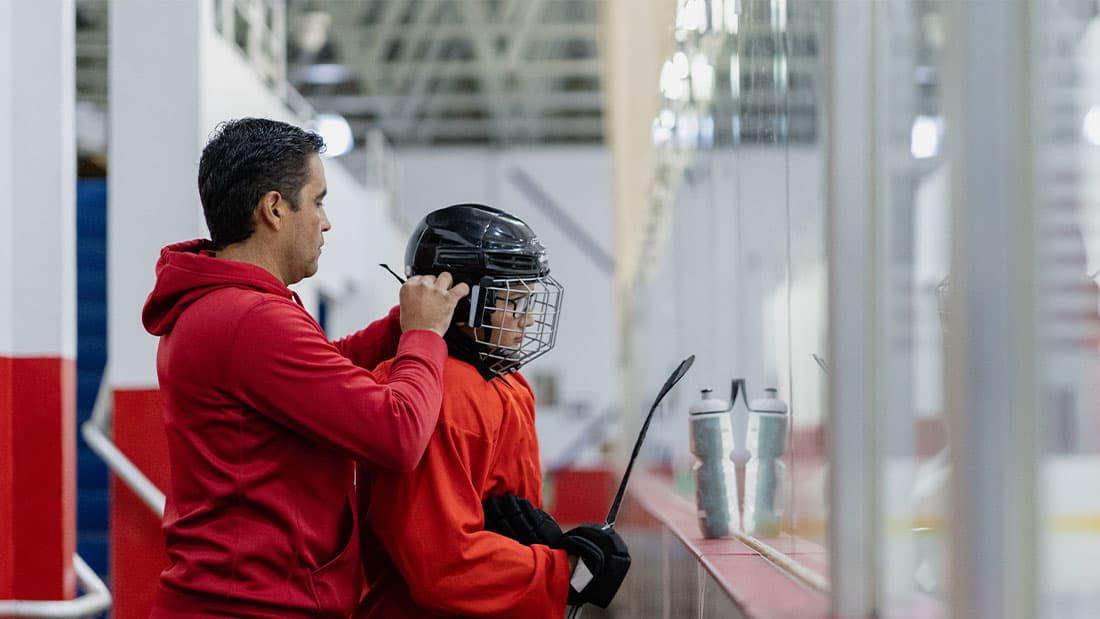Your Playing Surface Matters
This is a true story. I’m a personal trainer. I worked with an NFL player who had been in the league for 8 years. He worked hard in the offseason, hoping to get signed for his 9th year. Unfortunately, his 9th year would be his greatest challenge because he sustained an injury often considered a career-ender. It was his daughter’s birthday, and he got her a trampoline as her present. Enjoying the moment, he decided to get on the trampoline and bounce along with his daughter and friends. Without warning, his knee gave way on a bounce, tearing his patellar tendon.
Sometimes the world doesn’t make sense. Here’s a world-class athlete, 6’8″ tall, nearly 300 pounds, strong as an ox, agile as a gazelle, fast as a greyhound, making millions of dollars per year do so…and the trampoline takes him out in seconds. How did this happen?
Why Sandpits and Trampolines Aren’t a Good Idea
The explanation is pretty simple. Even though he’s an incredible athlete, his knee simply wasn’t used to bouncing on a trampoline. For many years, he had finely tuned his body to be able to bounce off a much harder surface, to be able to explode off of turf and grassy surfaces, bulldozing 300lb linemen. Trampolines are obviously a very different surface. The ground gave way underneath him, throwing his timing off his usual jumping mechanics. At his body weight, plus the momentum of coming down on the surface, was too much for his tendon to withstand.
This is precisely why I don’t like athletes to train on varying surfaces that their sport doesn’t use. Training in the sand is for volleyball players, not football. Trampolines are for trampoline athletes. And aquatic exercise has no place for healthy basketball players. You get the idea.
Buddy Morris, the multi-time NFL strength coach of the year for the Arizona Cardinals, is a big advocate of this. He claims that sand, water, trampoline training, and the like will only make you slower. Jumping off harder surfaces demands joints to be explosive. When the ground gives way under you like a trampoline or sandpit, it removes the explosive demands, as you must slowly jump up to build momentum. Not a good idea for athletes that play on grass, turf, and hardwood.
Injuries like my client sustained are far too common, but many of them are preventable. Landing and decelerating from jumps, bounds, and sprinting carry the highest incidences of lower body injuries in sports. Perfecting mechanics, strength, and stability in these patterns is paramount to reducing injury risk in sports.
Men vs. Women
Further, we know that male and female athletes tend to have different jumping and landing mechanics that need to be considered. Female athletes tend to have more knee-dominant jumping and landing strategies, likely contributing to the higher knee injury rates among female athletes. Men tend to use their hips more, which is better for power and injury prevention. Still, some research shows that it can lead to poor ankle strategies, leading to a greater incidence of ankle injuries for men.
Why Surfaces Matter
Even more, new research shows that the surface type can influence injury likelihood, depending on how you jump. A 2020 study from the University of Buffalo looked at the differences in landing mechanics between men and women across different playing surfaces. Their research found that women tended to have worse mechanics on harder surfaces such as concrete. In contrast, they performed better on softer surfaces such as turf and hardwood. Vice versa, the men tended to have their best mechanics on concrete and not so much on hardwood and turf. The differences were not significant, but they were pretty consistent, despite the subtle differences in performance.
This is the first study of its kind, so it’s hard to make many scientific conclusions based on the need for more data. However, it is consistent with the theory of how boys and girls jump differently. If girls use their knees too much, a harder surface can be harsh to the knee joint. Whereas boys tend to benefit from the ground that has a little give to it, given they use their hips more, which is a less explosive joint than the knee.
In Conclusion
Regardless, this study and theories should not change a coach’s approach to training their athletes. Every athlete should have a well-planned, robust training program that emphasizes proper jumping, landing, and deceleration techniques. Every athlete is at risk when performing these movements at high levels, no matter the surface. However, special consideration should be given when boys play on softer surfaces such as grass, turf, rubber, and hardwood. Female athletes should be especially careful when playing on harder surfaces such as concrete, blacktop, etc.
RECOMMENDED FOR YOU
MOST POPULAR
Your Playing Surface Matters
This is a true story. I’m a personal trainer. I worked with an NFL player who had been in the league for 8 years. He worked hard in the offseason, hoping to get signed for his 9th year. Unfortunately, his 9th year would be his greatest challenge because he sustained an injury often considered a career-ender. It was his daughter’s birthday, and he got her a trampoline as her present. Enjoying the moment, he decided to get on the trampoline and bounce along with his daughter and friends. Without warning, his knee gave way on a bounce, tearing his patellar tendon.
Sometimes the world doesn’t make sense. Here’s a world-class athlete, 6’8″ tall, nearly 300 pounds, strong as an ox, agile as a gazelle, fast as a greyhound, making millions of dollars per year do so…and the trampoline takes him out in seconds. How did this happen?
Why Sandpits and Trampolines Aren’t a Good Idea
The explanation is pretty simple. Even though he’s an incredible athlete, his knee simply wasn’t used to bouncing on a trampoline. For many years, he had finely tuned his body to be able to bounce off a much harder surface, to be able to explode off of turf and grassy surfaces, bulldozing 300lb linemen. Trampolines are obviously a very different surface. The ground gave way underneath him, throwing his timing off his usual jumping mechanics. At his body weight, plus the momentum of coming down on the surface, was too much for his tendon to withstand.
This is precisely why I don’t like athletes to train on varying surfaces that their sport doesn’t use. Training in the sand is for volleyball players, not football. Trampolines are for trampoline athletes. And aquatic exercise has no place for healthy basketball players. You get the idea.
Buddy Morris, the multi-time NFL strength coach of the year for the Arizona Cardinals, is a big advocate of this. He claims that sand, water, trampoline training, and the like will only make you slower. Jumping off harder surfaces demands joints to be explosive. When the ground gives way under you like a trampoline or sandpit, it removes the explosive demands, as you must slowly jump up to build momentum. Not a good idea for athletes that play on grass, turf, and hardwood.
Injuries like my client sustained are far too common, but many of them are preventable. Landing and decelerating from jumps, bounds, and sprinting carry the highest incidences of lower body injuries in sports. Perfecting mechanics, strength, and stability in these patterns is paramount to reducing injury risk in sports.
Men vs. Women
Further, we know that male and female athletes tend to have different jumping and landing mechanics that need to be considered. Female athletes tend to have more knee-dominant jumping and landing strategies, likely contributing to the higher knee injury rates among female athletes. Men tend to use their hips more, which is better for power and injury prevention. Still, some research shows that it can lead to poor ankle strategies, leading to a greater incidence of ankle injuries for men.
Why Surfaces Matter
Even more, new research shows that the surface type can influence injury likelihood, depending on how you jump. A 2020 study from the University of Buffalo looked at the differences in landing mechanics between men and women across different playing surfaces. Their research found that women tended to have worse mechanics on harder surfaces such as concrete. In contrast, they performed better on softer surfaces such as turf and hardwood. Vice versa, the men tended to have their best mechanics on concrete and not so much on hardwood and turf. The differences were not significant, but they were pretty consistent, despite the subtle differences in performance.
This is the first study of its kind, so it’s hard to make many scientific conclusions based on the need for more data. However, it is consistent with the theory of how boys and girls jump differently. If girls use their knees too much, a harder surface can be harsh to the knee joint. Whereas boys tend to benefit from the ground that has a little give to it, given they use their hips more, which is a less explosive joint than the knee.
In Conclusion
Regardless, this study and theories should not change a coach’s approach to training their athletes. Every athlete should have a well-planned, robust training program that emphasizes proper jumping, landing, and deceleration techniques. Every athlete is at risk when performing these movements at high levels, no matter the surface. However, special consideration should be given when boys play on softer surfaces such as grass, turf, rubber, and hardwood. Female athletes should be especially careful when playing on harder surfaces such as concrete, blacktop, etc.











